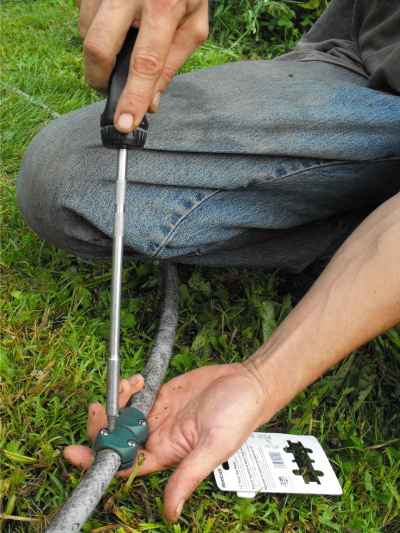
Hose entanglement

I've decided these plastic hose repair kits are better than the metal
ones.
It's easier to install, and
most importantly won't snag on every other thing that comes by.
I know the metal might stand
the test of time better, but this is some hard plastic, and I'll do
almost anything to prevent any more entanglement with the mower.
Want more in-depth information? Browse through our books.
Or explore more posts by date or by subject.
About us: Anna Hess and Mark Hamilton spent over a decade living self-sufficiently in the mountains of Virginia before moving north to start over from scratch in the foothills of Ohio. They've experimented with permaculture, no-till gardening, trailersteading, home-based microbusinesses and much more, writing about their adventures in both blogs and books.
Want to be notified when new comments are posted on this page? Click on the RSS button after you add a comment to subscribe to the comment feed, or simply check the box beside "email replies to me" while writing your comment.

In an outside environment thermoplastics (like the hose and probably the clamp) will deteriorate significantly in a couple of years due to UV radiation which breaks the chemical bonds in the material. Most so-called "soft" plastics are usually made soft by mixing in plasticizers. These plasticizers invariably leak out into the environment. Some of them (phtalates e.g. in PVC) are known endocrine disruptors and are best avoided.
Having said that, thermosetting materials will last much longer than thermoplastics but are more expensive to make and cannot be melted once formed. The so-called GRP (glass-reinforced plastic) uses a thermosetting material, usually polyester, in combination with glass fibers.
Most common small plastic parts that you'll see are thermoplastics, except for melamine dinnerware and cladding for chipboard furniture and "formica" panels. Car tires are usually made with thermosetting rubber.
If you want to make the hoses last longer, either put them away out of direct sunlight when not in use, or bury them under the ground. Both options should prevent UV from damaging the materials. It would also prevent damage from the mower.
You can think of thermoplastics essentially as cold cooked spaghetti. The jumbled long strands stick together. But heat it up, and the mass becomes malleable. And if you start cutting the strands one by one (like UV does to the molecular chains of plastics), sooner or later the mass will fall apart.